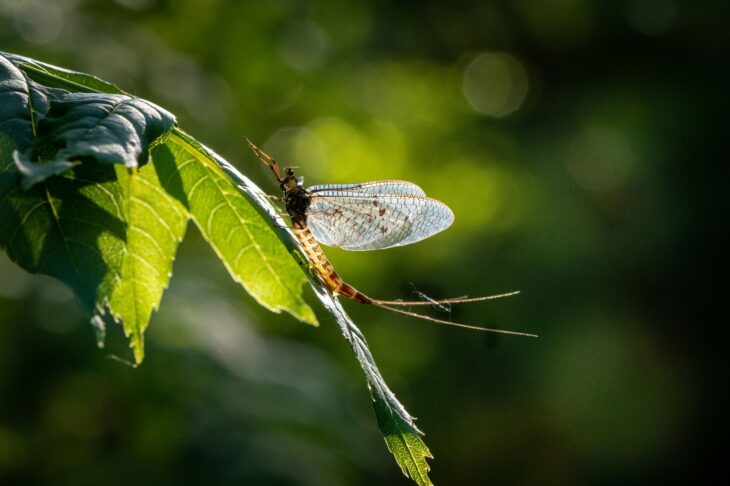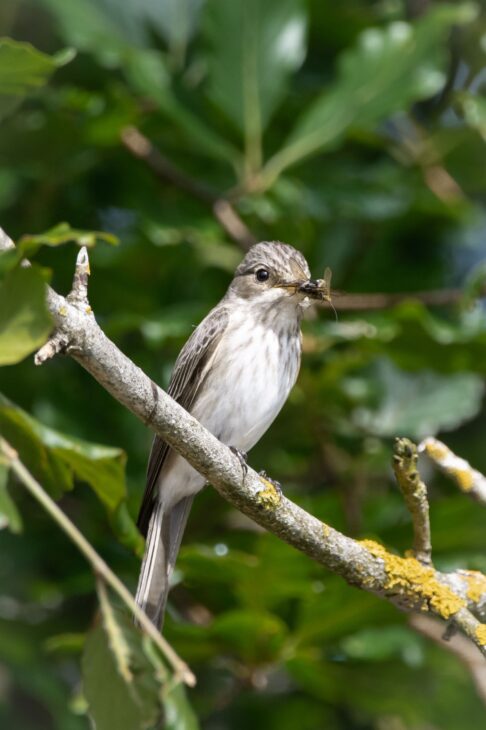The natural phenomenon of the mayfly hatch
Wildlife enthusiasts will have that certain time of year on the wildlife calendar that is their favourite. Whether it be the mad March hares boxing at the start of Spring, the moment newly born swan cygnets take their first swim or the abundant return of the pink footed geese in early Autumn. Sometimes it is too difficult to choose as they are all special moments in their own unique way. I personally find it very difficult to choose but I do have that special time of year that exceeds the rest.
As we come to the end of May and enter the first week of June there are a few days, sometimes up to a week, when our rivers truly come to life. The largest of our mayflies emerge from the water in their thousands and fill the skies with dance. It is truly a natural wonder that has to be witnessed to be fully appreciated.

Mayflies have an extraordinary life cycle which comes in four stages – egg, nymph (young), sub-imago (sub-adult) and imago (adult).
The eggs hatch between a few days to a number of weeks after being laid. They hatch into nymphs and spend the next two years at the bottom of the river feeding on algae and other vegetable matter. Next, they finally make their way to the surface of the water before emerging as adults in the sub-imago stage. The sub-imago pulls itself onto overhanging plants and trees to dry its wings and then moult one final time to become an imago. At this stage they only have one purpose in their remaining few hours of life left, which is to mate before falling back to the water surface to lay their eggs and die. Which is when the life cycle starts again.
When on the wing in search for females, the males will fly vertically up then vertically down as if falling. It is as if they are dancing in the evening sunlight. If you are lucky enough to catch this natural wonder on a calm, clear summer’s evening, you will experience, in my opinion, one of the most beautiful natural sights there is on planet earth. The golden sunlight reflects off of the mayflies and gives this gold glitter effect. It is a sight that I have been trying tirelessly to capture with my camera but have still yet to succeed.
Of course, with the sheer abundance of sizeable flies on the wing, it is going to attract predators which feed on large invertebrates. Robins, wagtails, swallows and my personal favourite, flycatchers.

Flycatchers migrate here from Africa and Asia to breed in the summer. There are two species in the UK, the spotted flycatcher and the rarer, pied flycatcher. They have both earned the name as a ‘fly catcher’ with their mastery of flight. Their combination of speed, accuracy and precision makes them deadly for flies on the wing.
During the mayfly hatch this year I watched as a spotted flycatcher struggle to swallow a huge mayfly it had caught. The flycatcher dropped the dead mayfly four times, diving down and catching each time it before it reached the ground. Finally managing to swallow it. This was a level of skill I have never seen any bird reach before.
It is all these amazing aspects which make the mayfly hatch my favourite time of year on the wildlife calendar. The hatch has already come and gone this year but don’t worry if you missed it. It will happen again next year and every year after that. So get it marked in your calendars to start searching rivers and lochs from mid-May to mid-June. Mark my words when I say, once you finally see it you will not forget it.
Daryl Smith, wildlife photographer.
Help protect Scotland’s wildlife
Our work to save Scotland’s wildlife is made possible thanks to the generosity of our members and supporters.
Join today from just £3 a month to help protect the species you love.
Preface
Wildlife enthusiasts will have that certain time of year on the wildlife calendar that is their favourite. Whether it be the mad March hares boxing at the start of Spring, …
